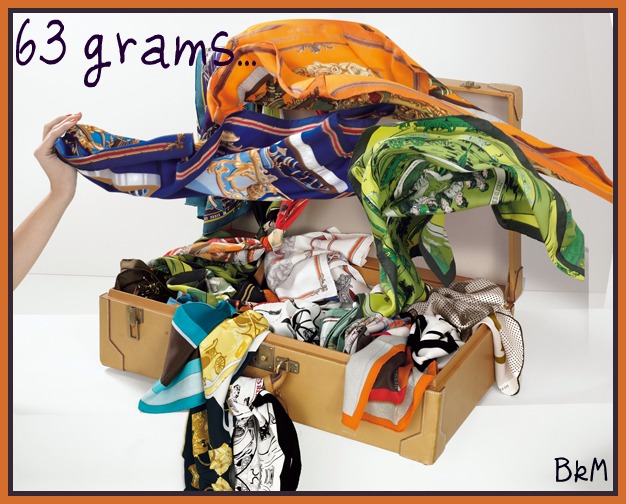NAPOLEON
Philippe Ledoux
Jacquard silk
First Issue: 1963
Reissues: 1985, 1995
Catalogued: 5D
This is my beautiful Napoleon by Philippe Ledoux:
(Este es mi precioso Napoleón por Philippe Ledoux:)

A detail of the central motive, the colors are incredible, antique green and burgundy, you could almost feel the touch of ancient velvet!!!
(Un detalle del motivo central, los colores son increíbles, verde antiguo y granate, casi puedes notar el tacto de viejo terciopelo:)

Philippe Ledoux made an extraordinary research when designing Napoleon, all four the corners are inspired on different paintings of the historical figure:
(Philippe Ledoux hizo una extraordinaria investigación cuando diseñó Napoleón, las cuatro esquinas están inspiradas en diferentes retratos de la figura histórica:)
Napoleon was wounded in Rattisbone:
(Napoleón herido en Ratisbona:)

This is the original painting by Pierre Gautherot:
(Esta es la pintura original de Pierre Gautherot)

The upper left corner is the most easy to recognize as it's based on a famous painting by JL.David depicting the Pass of St.Bernard:
(La esquina superior izquierda es la más fácil de reconocer porque está basada en una famosa pintura de JL David que muestra el Paso de San Bernard)

Original painting:
(Pintura original:)

The last corner (upper right) is the trickiest to recognize, it represents Napoleon proclaimed Premier Consul:
(La última esquina (superior derecha) es la más difícil de reconocer, representa a Napoleón proclamado Primer Consul:)

Ledoux got his inspiration from a tapestry, Tapisserie des Gobelins:
Ledoux encontró su inspiración en un tapiz de Tapicería de los Gobelinos:

At the center of the scarf, Ledoux depicts the arrival at Notre Dame Dec 2, 1804 after burning the Book of Rites:
En el centro del pañuelo, Ledoux representa la llegada a Notre Dame el 2 de diciembre de 1804 después de quemar el Libro de los Ritos:
Symbols and arms in Napoleon:
The Bees: the golden bees called cicadas, are symbol of immortality and resurrection, they were chosen to link the new dynasty to the very origins of France as cicadas were discovered in the tomb of Childeric I, founder of Merovingian dynasty in 457. Bees are the oldest symbol for French monarchy.
The uniforms in the center, the swords: on the left there is the First Consul dresscoat, on the right, Napoleon's Chasseurs à Cheval uniform. Further down the design, the First Consul and Coronation swords can be seen, as well as two sabres from the Egyptian campaign.
The chain of the Légion d'honneur: it took its name from ancient Rome. The chain of the Légion d'honneur, reserved for the emperor, princes of the imperial family and grand dignitaries, is composed of a gold chain made of 16 trophies linked by eagles with the ribbon and cross of the order at their necks. This chain is bordered on either side by a small chain alternating stars and bees. The central motif, the Napoleonic N, is encircled by a laurel wreath and supports the cross of the Légion d'honneur, a five-pointed pommel-pointed star, in white enamel. In the centre is the laurel-crowned profile of the emperor, the whole surmounted by the imperial crown.
The Eagle: it's a symbol of imperial Rome, Jupiter's bird, and was associated from the earliest antiquity with military victory. The day after his coronation, Napoleon had an eagle placed at the top of the shaft of every flag in the Napoleonic army.
I've tried to discover the real meaning of the number 25 displayed four times on the scarf. I should think that it has something to do with freemasonry, 25 is a powerful number for old freemasons and it's possible that Ledoux belonged to some of this societies in France as Napoleon did.
Napoleon is a jacquard silk scarf, for more information about jacquard technique in Hermès scarves, please visit the following link:
Napoleón es un pañuelo en jacquard de seda, para más información sobre está técnica en Hermès, por favor, visita el siguiente link:


I've just found your wonderful blog, and am so enjoying reading it. The Napoleon scarf is my favourite ever Hermes, mine is in bright orange with grey . Now I shall treasure it even more, and especially knowing more about the history and symbolism within .
ReplyDeleteI also have the Carnaval de Venise, and love the design too
Estrella,
DeleteYou seem to know a lot about Hermes scarves and I'm hoping that you can help me.
I lost an Hermes scarf that my mother had given me many years ago. I'm quite certain that the design was by Phillipe Ledoux, as it was very similar to "L'hiver en Poste" but the colors were predominantly deeper and richer, with a lot of blue, some red, and green less dominant off-white i.e. ivory. It depicted a center winter scene and horse-drawn carriages around the side boarders which were also embellished with pine sprigs, and some type of berries, and I believe a fox was depicted as well.
Have you ever seen a scarf with such a scene? Any lead orhelp you could give me in locating a picture or the scarf itself would be greatly appreciated.
I.
Hi Ingrid,
DeletePlease, email me at: amarumar@gmail.com, I'll do my best to help you. Best.
I am sure that the numbers 2 and 5 (not 25) on a number Standarte Guards regiments. On the field Standarte necessarily represented the regiment number and slogan.
ReplyDeleteLara.
Lara, thank you so much for your feedback and info, this is really interesting, I hadn't thought about it. :)
ReplyDeleteThank you! :)
ReplyDeletelook:
http://les-polonais-sous-l-empire.over-blog.com/article-drapeaux-et-etendards-de-l-armee-polonaise-47974896.html
Lara.
Another standard:
ReplyDeletehttp://www.93emeri.fr/crbst_17.html#anchor-top
http://www.93emeri.fr/crbst_18.html#anchor-top
Lara.